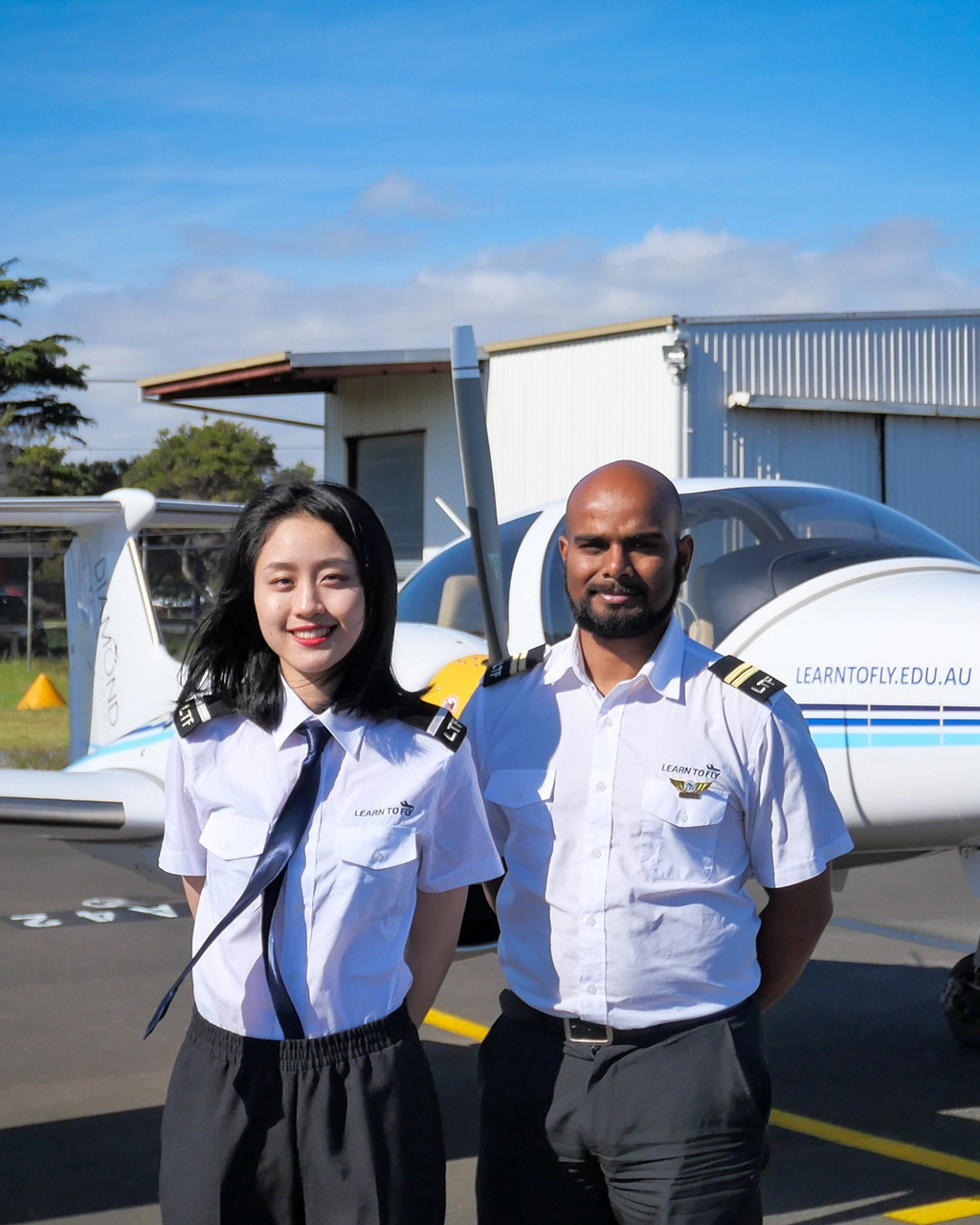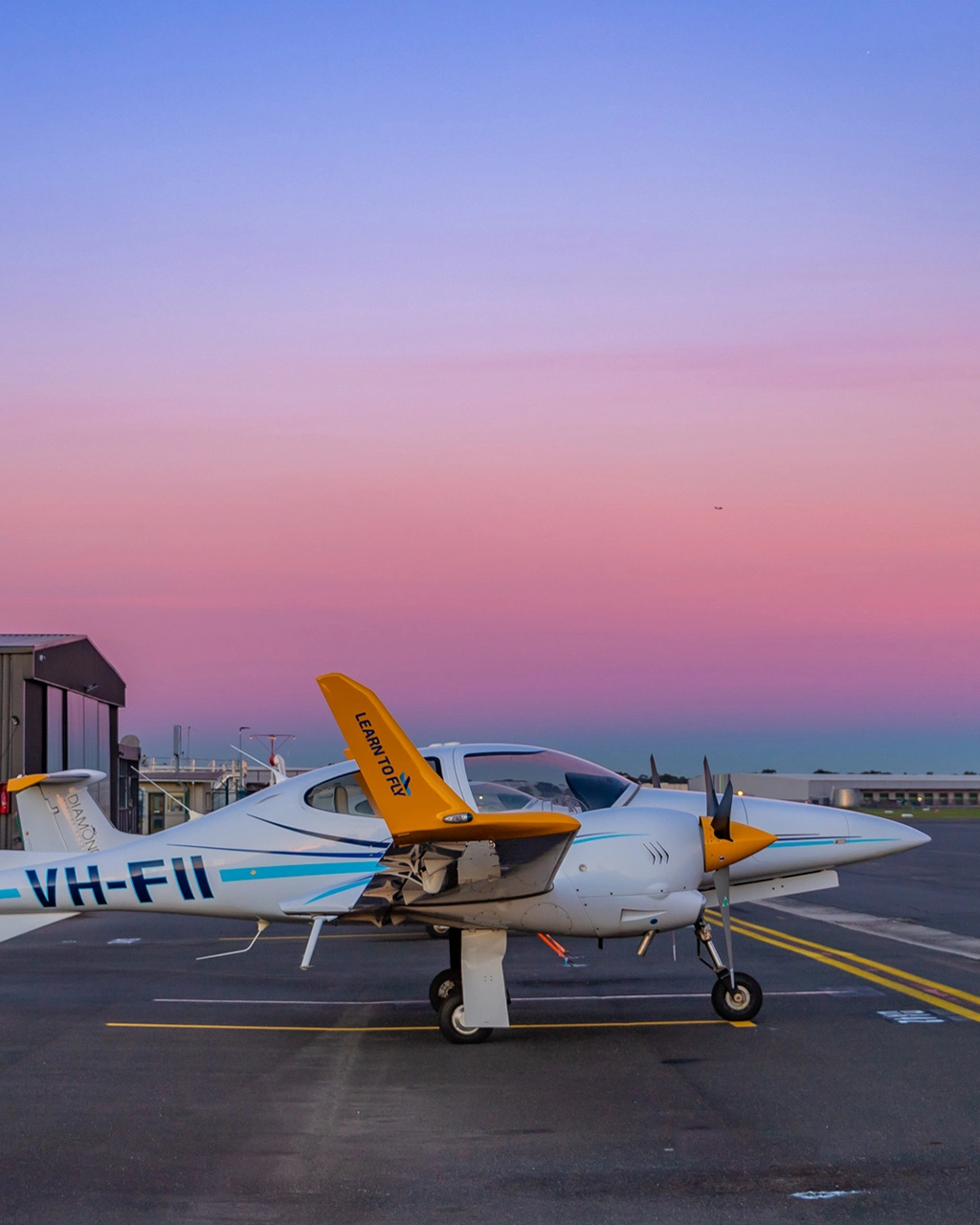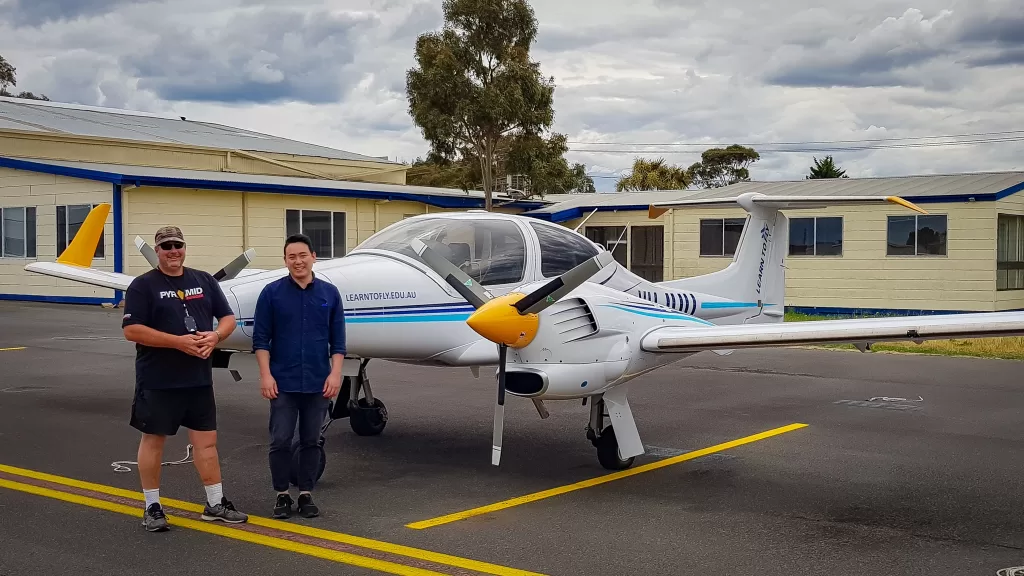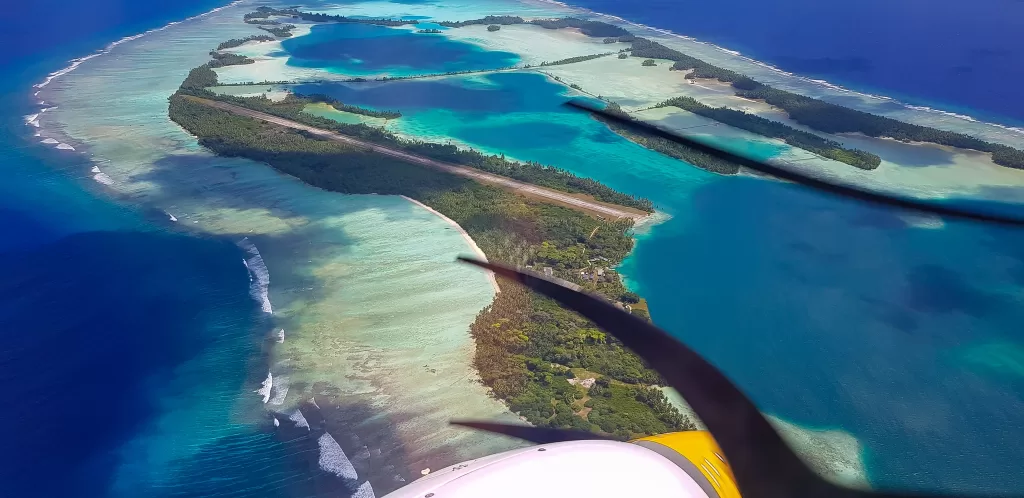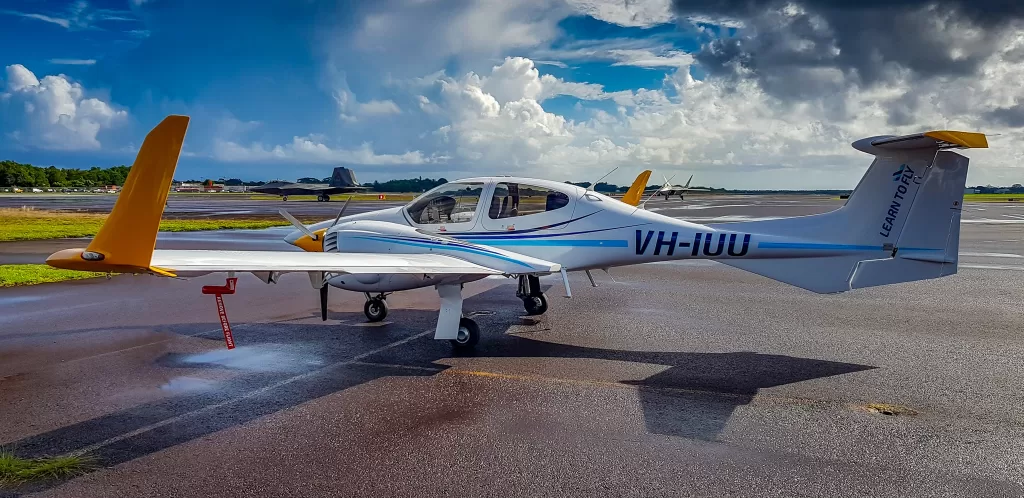So you want to be a pilot? That’s awesome! You won’t regret embarking on this rewarding and exciting career. Before you even get to sit in the cockpit and take the controls, there are lots of considerations, particularly around choosing the right flying school. Let’s take a look at things to know before you start flight training.
We’re sure you are aware that becoming a pilot is full of challenges and requires hard work. If it were easy, everyone would do it! Pilot training will test your limits of knowledge, persistence and patience – in a good way.
There are dozens of reasons to do your pilot training in Australia. Australian pilot qualifications are internationally recognised and highly regarded because our education and training standards are some of the highest in the world. We also boast:
– Being a world leader in aviation safety
– Consistently good weather
– Visa options that allow students to also work up to 20 hours a week
– A safe, and politically and socially stable environment to live and learn in
Make sure you love flying!
Enrolling in a flight training course is a commitment, both financially and time-wise. Before you start flight training, it’s a great idea to try it out first. A Trial Introductory Flight (TIF) is an excellent way to get the feel of being in the cockpit of a small aircraft, and trying your hand at taking the controls for some basic manoeuvres under the guidance of an instructor.
We also have beginner courses like the Learn To Fly Starter Set available. These will get you flying and give you enough experience in the air to be able to decide whether it’s for you. All of the training and flight time in these courses can also actually count towards a licence if you decide to commit to a more extensive training.
What are your pilot goals?
Knowing what you want to achieve from your flight training is an important consideration. Do you want to fly for fun, or do you want to think about flying for a career?
The answer to this question will impact the direction you take with your training. Make sure you choose a flying school with a range of courses to cater for your aviation goals. Make sure you talk to the flying school before you start flight training so that they can help you to choose the right path.
What aircraft should I fly?
The cost of pilot training courses is in part reflective of the type of aircraft in their fleet. You can select the training that fits your budget according to not only your pilot aims but the kind of aircraft you want to learn in.
A quality flying school will have different types of aircraft in their fleet to not only suit different budgets, but also to allow for varied flying experiences. Some pilots prefer to train in aircraft with all of the modern technology equipped (like glass cockpit, auto-pilot etc), whilst others gain more out of flying an aircraft where the majority of functions are performed completely manually.
A good flying school will allow their pilots to experience different aircraft, and to “progress” to other aircraft during training. They’ll also have flight simulation options available for extended learning whilst on the ground.
Another very important factor to consider before you start your flight training is the availability of aircraft. Make sure you choose a flying school with a big enough fleet to cater for their students during busy periods, and when aircraft require scheduled maintenance.
Learn To Fly offers a range of aircraft covering both single and multi-engine flight training. Our fleet includes the Sling 2, Cessna 172, Diamond DA40, Piper Seminole, Diamond DA42, Super Decathlon and RA-Aus Foxbat. Check it out here.
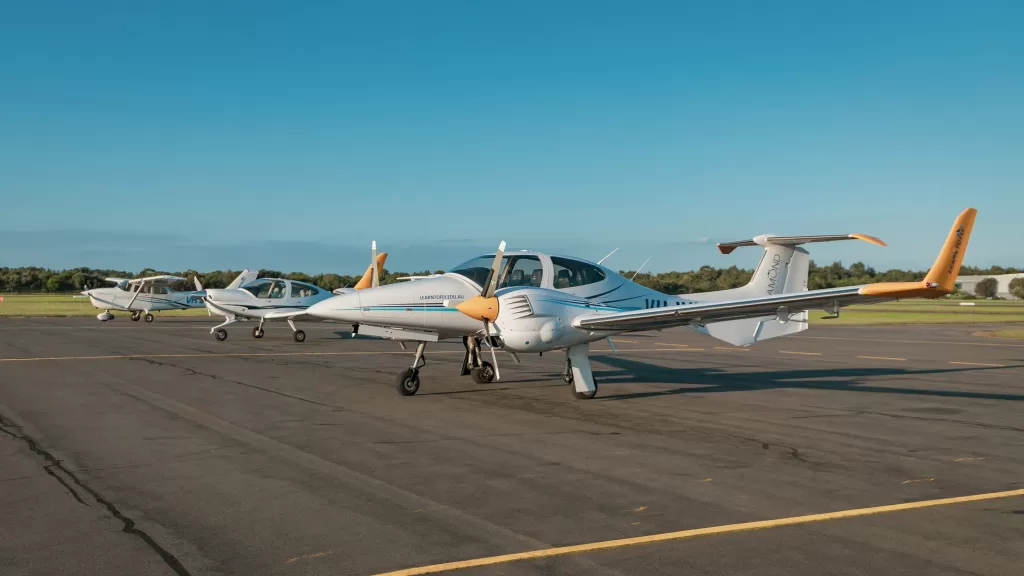
What other facilities do I need?
Remember, you won’t be spending ALL of your time in the air! Every training course has a theory component to it. A good flying school will have modern facilities that provide a good learning and study environment on the ground as well as in the sky.
A school with online training options will allow you to keep learning from wherever you are. This means you can use those spare moments to revise knowledge or sharpen your skills at home instead of watching Netflix!
Flight simulators now form an important part of training. They are actually a great way to hone your skills in realistic flight environments whilst never having to leave the ground. Utilising simulators well can save you money. This allows you to maximise your time in the actual aircraft and reducing the chance of you having to repeat lessons.
Learn To Fly has a range of hi-tech simulators. This includes the full cockpit Alsim AL42 (Diamond DA42) and TRC 373 (Cessna 172) synthetic trainers, as well as the full motion Xplane simulator with Garmin avionics.
Are there different types of flight instructors?
The best flying schools will have Grade 1, 2 and 3 Flight Instructors. Whilst Grade 1 instructors are generally the most experienced by flying hours, an instructor’s flying background is made up of much more than just hours.
Flight Instructors with endorsements and ratings such as Multi-Engine or Instrument Flight Rating are a great asset to your training too, so it’s important to look at the instructors’ range of flight experiences and not just the flying hours.
Besides qualifications, you want an instructor who is enthusiastic, adaptable and professional. You’ll be spending a lot of time together, so you need to get along and connect with their teaching style. Your instructor should be able to give honest, constructive feedback at all times to help you become an better pilot.
FLIGHT TRAINING BOOKING TIP: Book extra sessions in as a back-up in case of cancellations due to weather, or aircraft and instructor availability. Be as flexible as possible and take every opportunity to fly.
What is ICAO English proficiency?
The International Civil Aviation Authority (ICAO) establishes certain principles and arrangements to facilitate safe and collaborative international civil aviation, including English proficiency standards. English is the chosen international language of civil aviation. Essential to your pilot training from the point of enrolment onwards, you must be able to communicate in clear English.
ICAO English proficiency testing is recognised in 192 countries which is great for international students wanting to transfer their licence to their home country. Aviation English standards are considerably higher in Australia, so you will be confident in your abilities.
There are English language requirements that you need to meet before you start your flight training, regardless of whether you are from a “native” English Speaking country. Check out the CASA website for more information.
Does it matter what airport I train at?
Location, location, location is so important in many life choices, and your flight school is no different. Is the flight school location easy to get to by public transport or do you need a car? How far from the city is it? Can they arrange accommodation if you are from interstate or overseas? These are all important questions to think about before you start your flight training!
Your flight school might be at an aerodrome, but is it near a major airport?
Different locations mean different aerodrome classifications. This can affect where and how often you can fly. For example, a Class G aerodrome has no air traffic control (ATC), meaning less practice on those vital radio calls allowing you to develop your aviation communication skills.
A flight school near a major airport may seem logical, but that also means operating in more restricted airspace, and therefore potentially having to go to other airports to practice your circuits.
LTF’s main training base is at Melbourne’s Moorabbin Airport, which is a Class D controlled airspace and one of the largest flight training airports in Australia. It has an advanced runway setup and a high volume of aircraft movements – which makes it perfect for learning aspects of flight training that smaller airports simply can’t offer. It’s also very well located with plenty of public transport options nearby.

When is the best time to fly?
The best time to fly in Australia is generally from Spring through Summer and Autumn, as that period offers more daylight hours and less chance of inclement weather. The state of Victoria also has “Daylight Saving” time from October through to April which allows you to fly until much later (up to 9pm in Summer).
It is beneficial to your flight training to experience a variety of flyable weather conditions – and the changeable climate at LTF’s Melbourne base is perfect for that.
Before you start flight training, chat to one of our flight training specialists. Email [email protected] or go to https://drift.me/learntofly/meeting to book a meeting and school tour.









